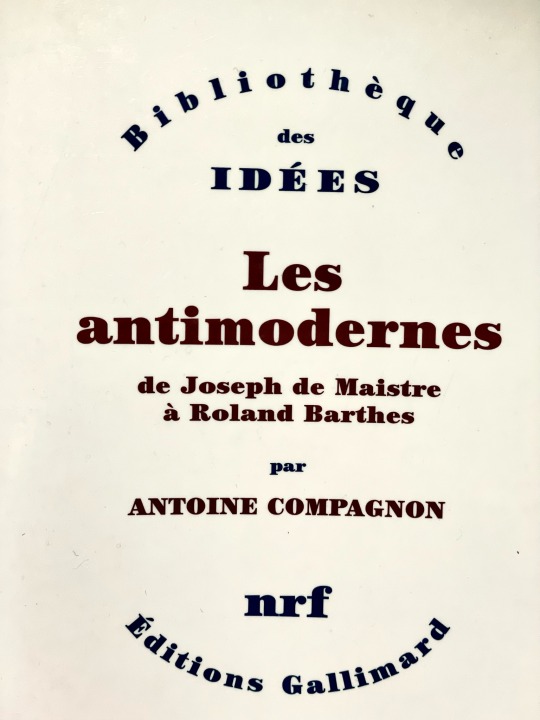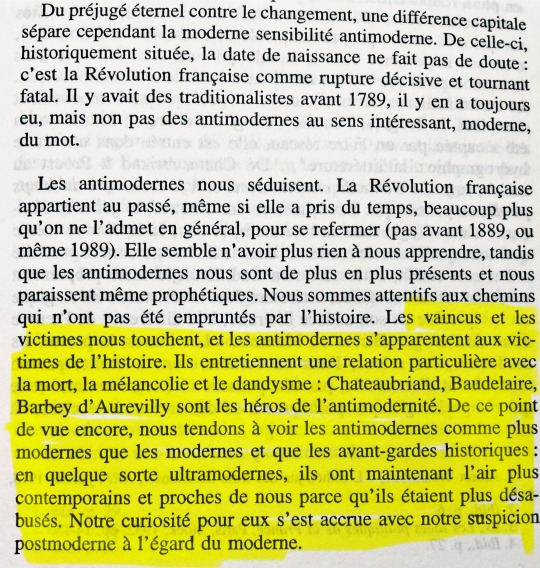#antimoderne
Explore tagged Tumblr posts
Text
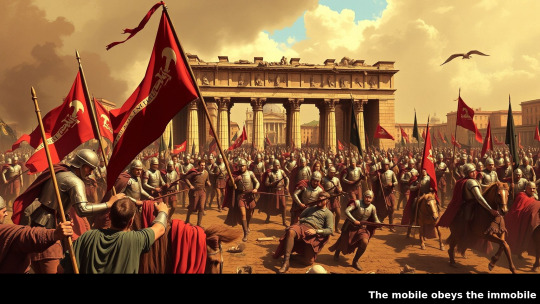
Europe’s decay stems from liberal-modernist subversion—only a return to Roman hierarchy, sacred war, and anti-democratic revolt can restore Tradition. #Evola #Traditionalism #AntiModernism #ImperialRome #RevoltAgainstTheModernWorld
0 notes
Text

Why Do You Fear Death?
"Do not fear death, for it is but the gateway to true life. He who has prepared his soul through repentance, prayer, and faith in Christ will not tremble before it. To the righteous, death is not an end, but a breaking of chains, a liberation from the burdens of this world. Do you not see the saints, how they faced death with joy and not sorrow? They knew that beyond this life, the eternal Kingdom awaited them, free from suffering and corruption. The world teaches men to flee from death, to fear it, to avoid all thoughts of it. But the Christian knows that life here is only a preparation for eternity. He does not cling desperately to the dust of this earth but lifts his eyes toward the heavenly homeland.
Death is not our enemy—sin is. Fear not death, but rather the unrepented sin that leads to eternal death. The martyrs, confessors, and ascetics of old feared neither sword nor fire, nor the torments of the wicked. They understood that to die for Christ is to live forever with Him. They counted the world and all its pleasures as nothing in comparison to the glory that awaited them in the life to come. Behold the martyrs, how they joyfully walked to their deaths, knowing that in a moment, they would be with Christ.
The foolish man labors endlessly for this life, striving for wealth, power, and comfort, only to be stripped of everything when death arrives. But the wise man prepares for the life to come, storing up treasures in heaven, where neither moth nor rust destroys, and where thieves do not break in and steal. To such a man, death is not loss, but gain. ‘For to me, to live is Christ, and to die is gain’ (Philippians 1:21), says the Apostle Paul. When a Christian has lived in faith and repentance, he will not meet death with terror, but with peace, for he knows that his true home is not in this world, but in the Kingdom of Heaven.
The world and its wisdom cannot understand this. It clings to life, fearing the unknown, rejecting the hope of the resurrection. But the Christian, instructed by the Holy Church and guided by the words of Christ, knows that death has been conquered. Christ trampled down death by His death, and to those in the tombs, He granted life. What, then, is left to fear? The righteous man who has purified his soul does not dread death, for it is but the doorway to the eternal joy prepared for him. Therefore, strive to live in a way that when your time comes, you will greet death not with trembling, but with hope. Repent, pray, and keep your eyes fixed on Christ, so that when He calls you from this world, you may depart in peace."
— St. Ignatius (Brianchaninov), The Arena

The world teaches you to fear death, to run from it at all costs. But is this wisdom? Or is it deception? The saints did not fear death, nor did they cling desperately to the dust of this world. What do you think? Has modernity lost the courage of the saints? Why do we fear what they welcomed?
#heresy#theology#orthodoxy#tradition#exposinglies#history#orthodoxchristianity#tradcath#crusaderposting#faithoverfear#preservethepast#antimodernism#minimalism#discipline#mentalhealth#monasticism#trans#lgbtq#self-discovery#gender#identity#truth#nonbinary#atheism#philosophy#existentialism#meaningoflife#rationalism#nihilism#womensrights
0 notes
Text
Are you okay? Why did you write this? What made you distort something as holy as Baptism into a scene of abuse? This is not just offensive—it’s outright blasphemy. Orthodox Baptism is a sacrament of light, bringing people into the Kingdom of Christ, not a tool for cruelty. If you hate Christianity, at least be honest about it, instead of twisting sacred things into horror for shock value.
St. John Chrysostom said, ‘No one is more miserable than the blasphemer, because while he offends God, he harms his own soul most of all.’ This kind of writing doesn’t just offend—it harms you. It separates you from truth and brings spiritual decay.
St. Basil the Great said, ‘Blasphemy against the Holy Spirit is the gravest of sins, for it denies the work of God.’ Do you understand what you are doing? If you think this is just fiction, understand that what is spoken and written against the truth does not disappear—it stays as a witness against the soul.
What other fanfiction like this have you written? If this is the kind of content you put out, I urge you to reconsider. I won’t just rebuke you—so will the saints and Christ Himself on the Last Day. But repentance is always open to you. Choose your next words wisely.



Tender // Ch. 3
MASTERLIST
word count: 1600+
CHAPTER WARNINGS: descriptions of child abuse; religious violence; language; anxiety; jealousy; arguing; brief suicidal/homicidal ideations; undiagnosed unspecified mental illness
When newborn babies are baptized, the process typically involves the priest or minister sprinkling or pouring the blessed water over the infant, while announcing the baptism ‘in the name of the Father, the Son, and the Holy Spirit.’ In Eastern Orthodox and Eastern Catholic traditions, the child is fully immersed in water, which seems dangerous, but recorded events of injury or death during the ritual are rare, to say the least. It’s generally safe for the child, barring any complications or underlying issues. But when the young boy’s mother mentioned baptism, her intentions were much more sinister.
He'd heard the water running as the bathtub was filled. He was told not to be afraid, that fear was the Devil’s work. He was ordered to behave, and do as he was told, and he would be cured. He wasn’t sick, he wanted to argue, but he knew better. Talking back would only worsen his punishments; he rubbed a sore spot on his jaw and waited for his mother to call him.
The bathroom was humid, the air thick, and the mirror fogged up. Wisps of white steam could be seen rising from the water’s surface. He wanted to be obedient. Maybe they’d love him, then. But still, he hesitated, provoking Mother’s anger. She grabbed him, her too-long fingernails leaving marks on his arms, and dragged him to the edge of the tub. She lifted him, far from gently, and plunged him into the hot water. The boy screamed as it scalded his bare skin. He instinctively fought in an attempt to be released, every nerve in his body protesting against the pain. He was only a child though, and he was no match for the grown woman that held his small frame against the bottom of the basin. And he wasn’t able to stop her from forcing his head under, nor was he able to prevent the burning in his chest as his lungs begged for air.
~
I knew that dating, and falling for, a famous rock star would come with its fair share of difficulties. When they went on tour last time, our relationship was still new and I was still in the process of finding my footing, so it was easier. I expected all the attention that he would be showered with anytime we were out in public. Whenever he posted a new picture on social media, the comments section would blow up, countless women publicly expressing their desire to get Josh in their bed. Those are easier to brush off and not take too seriously, but it irked me regardless.
Today has been especially annoying. This is the third person who has approached him for a photo. I know I’m glaring at this dumb, starry-eyed girl who’s interrupting our day together, fawning over him like a lovesick puppy. It’s disgusting. And what makes it worse is that Josh dishes it right back. He’s all excited smiles, more than happy to meet a fan. He throws his arm around her shoulder and poses as her friend snaps the picture, then plants a kiss on her cheek. I think the girl might cry, and I’m silently hoping she trips and eats shit on the concrete.
I don’t say another word until we get to the car. I start it and grip the steering wheel before Josh rests his hand on my thigh.
“Hey, what’s wrong?”
He’s so clueless and it only makes me angrier. “Nothing’s wrong.”
“Liar.” Yeah, that’s all I am, isn’t it? “Tell me.”
I clench my jaw and pull out onto the road. If I say what’s on my mind it likely will only make things worse, so I keep my mouth shut, hoping he’ll drop it. But he continues to pester me until I can’t ignore him. “If you want to talk so bad, why don’t you hit up your new girlfriend?”
After a moment, he does something I don’t expect and laughs. Why can’t he ever take anything seriously? “Are you joking? You’re pissed off because you’re jealous of a fan?”
“I’m not jealous.” I most definitely am. “You kissed her.”
“On the cheek! I kiss a bunch of my fans on the cheek!”
“Is that supposed to make me feel better?”
He laughs again, but this time it’s out of exasperation as he crosses his arms and turns to look out the passenger side window. “That’s fucking stupid,” he mutters.
“Okay, yeah, I’m sorry that I don’t want to watch my boyfriend flirt with everything on two legs,” I bite back.
“Oh my God, could you be anymore dramatic? I’m not flirting with anyone, so stop acting like an asshole.”
Here we go. I’m the asshole. Make me out to be the bad guy. Am I being a bit unreasonable and possessive? Probably. But it makes my blood boil when strangers think they have the right to touch him. He doesn’t belong to them. He doesn’t see the issue, like it’s all just a big joke to him. I consider that he doesn’t give a shit about me, and my grip on the steering wheel tightens so much my hand is beginning to ache.
I see a box truck in the opposite lane of traffic, and for a split second, I wonder how much damage it would do if I turned the wheel, just enough. But I shake it off and push it away. That would be outrageous. I don’t really want to hurt him.
I don’t trust myself to speak again, so I keep my focus on the road. The silent treatment only pisses him off more, which I expected. Josh is a fighter; he always has to have the last word, and he hates being ignored. I do just that, though, and he’s fuming by the time we get back to his house. I think it’s best if we give each other some space, so I don’t go inside with him. I drop him off and keep driving, mostly to calm myself down, partially to evaluate why I’m angry and if it’s even worth it.
It’s not. Josh is right, and it’s a stupid thing for me to be upset about. Still, I’m unable to shut off the voice in my head that says he’ll never truly be mine. I know he won’t change, and I know if I want to keep him, I need to bite my tongue and swallow these raging insecurities. I think about walking away, letting him off the hook so he can be fully free, but the thought makes me want to vomit.
As much as I try to reel it in, my mind keeps going back to that girl, and the two before her. I create scenarios in my head about Josh while he’s on tour, crawling into bed with any person who bats an eyelash in his direction. I’m imagining him letting other men touch him, kiss him, fuck him. And the deeper I dive into my own fears, the worse it gets. Then the guilt sets in. I’m beating myself up over how I’ve treated him. I’m ashamed of myself for not being able to trust him; he’s never given me any reason not to. If I’m being honest with myself, I’m fully aware that my personal issues and inability to trust people is not Josh’s fault, and there’s no reason to take it out on him. My internalized precarity, and maybe a trace of narcissism, makes it difficult for me to admit when I’m wrong. I refuse to take the blame where I probably should. But I know if I have any chance of saving what I have with Josh, I need to suck it up and apologize, even if it’s all pretend.
~
I give him time to cool off and give myself time to get my thoughts in order. I need to have a plan. Later in the evening, I text and ask if I can swing by to talk. He answers immediately. ‘Of course,’ like he thinks it’s a dumb question, like he’s not even mad anymore.
I’m wrong about that. When he lets me inside, he stands in the living room with his arms crossed, watching me expectantly. Oh. He’s waiting for an apology. I should have known he wouldn’t be the first to cave. He doesn’t think he should have to apologize. I don’t really think I should either, but I swallow my pride.
“I’m sorry, Josh. I acted like a jerk.” I’m intentionally trying to look remorseful, even though I don’t feel it.
“Yeah, you did.”
I’m tempted to bite back and start another fight, because fighting is easier than whatever this is. But again, I push down the urge. “I was jealous, and I know it was stupid. I won’t happen again.” It feels like an empty promise, because I know I can’t really guarantee it, but I can try.
“Thank you.” He’s thanking me for the apology itself, but I’m not sure it’s something he should be grateful for. He drops his arms and closes the distance between us. I grab his waist and pull him against me as soon as I have the opportunity. He doesn’t resist. “I can’t help it, ya know. Physical touch is my love language, and I love getting to meet people. But I’d never purposefully do anything to hurt you, Finn. I love your stupid face too much. And no matter how many fans I get to interact with, you’re the one I’m coming home to.”
I don’t know what I expected but it isn’t that. Even when he’s irritated with me, he’s so loving. His words help to reassure me, and my own anger seems to melt away. I’m not entirely sure what it means that he can diffuse that bomb so effortlessly. Maybe one day I’ll figure it out, and all the strangeness will start to make sense.
I place a gentle hand on his cheek and kiss him softly. “I love you, too.”
///
TAGLIST (let me know if you want to be added!)
@hollyco @fleetingjake @musicislove3389 @hailthegodsong @josh-iamyour-mama
#orthodoxchristianity#orthodox#easternorthodoxy#orthodoxicons#lastjudgment#orthodoxfaith#spiritualwarfare#orthodoxtradition#christianity#finaljudgment#hell#heavenandhell#repentance#sin#truth#salvation#orthodoxart#heresy#antimodernism#exposinglies#sergianism#anti-sergianism#apostasy#ecumenismisapostasy#fearofgod#spiritualstruggle#orthodoxresistance#fireoftruth#hellfire#demonology
13 notes
·
View notes
Text
Qur’an-only Muslims deterritorialize the Qur’an from centuries of supplementary textual tradition and then reterritorialize the Qur’an as the center of Muslim life. The move is not reducible to an antimodern return to the glory of primordial Islam and sealing of the Qur’an against the outside, but can also ironically force the opposite, an opening to new modes of engagement. In gender-progressive and feminist Muslim thought, privileging the Qur’an with a sola scriptura argument means narrowing the field of battle and depriving the patriarchy of so much ammunition that it had collected while lording over an intellectual tradition for centuries.
– Michael Muhammad Knight, Sufi Deleuze: Secretions of Islamic Atheism (2023)
#Michael Muhammad Knight#Sufi Deleuze#Islam#Atheism#Secularism#Religion#Muslim#Qur'an#Gilles Deleuze#Detournement#⚒️
4 notes
·
View notes
Text
The best essays from America’s premier cultural historian Jackson Lears has been hailed as the “dean of American cultural history” and “one of the few pre-eminent historians of our time.” Well known for his elegant, daring scholarship on topics such as antimodernism, advertising, and luck, Lears has also been a critic and essayist whose public-facing writings—published in journals such as the New Republic, The Nation, the London Review of Books, and the New York Review of Books—have explored a variety of subjects and themes, both contemporary and historical, from modern environmentalism to liberal arts education, from the plastics industry to the happiness industry, from Theodore Roosevelt to Seymour Hersh, from Van Wyck Brooks to Anne Applebaum. The essays collected here, written over the course of over forty years, are absorbing reading for anyone interested in American history, culture, or intellectual life and provide models of an engaged critic at work on topics and figures both high and low. Offering compelling lenses on historical subjects while setting contemporary culture in rich historical perspective, the essays bridge the gap between history and social commentary and afford a sweeping view of the changing intellectual scene from 1977 to the present.
2 notes
·
View notes
Text

Rosalind Krauss on Georges Bataille's review of L'Art Primitif in Documents, in Art Since 1900: Modernism, Antimodernism, Postmodernism
4 notes
·
View notes
Text
[B]ecause basic ideas about human action in a divinely ordered world had long been conceptualized in terms of Judaism, revolutions and counterrevolutions in those ideas could be (and often were) fought through figures of “Judaism” descended from those that had sustained the earlier political and theological order. This is not to say that the centuries of conflict and change that produced European Enlightenment and counter-Enlightenment, modernity and antimodernism, should be understood principally in terms of “Judaism.” It is only to say that neither Enlightenment nor modernity overthrew the Christian theologies of Judaism described in earlier chapters. Instead they translated them into new terms, embedding them into the philosophies and sciences with which they claimed to make a new and more critical sense of the cosmos. In the process, they simultaneously altered the work these figures of Judaism did in the world, and the possibilities of life in that world for real Jews.
“‘Israel’ at the Foundations of Christian Politics: 1545–1677,” Anti-Judaism by David Nirenberg
9 notes
·
View notes
Text
Die antiisraelischen Proteste an den Universitäten in Italien erinnern ihn an die Methoden faschistischer Milizen in der Ära des Squadrismus (1919–1923). Ein Gespräch mit dem italienischen Faschismusforscher Brunello Mantelli über rot-braune Tendenzen in der italienischen Linken und Konflikte in der ANPI, dem landesweiten Partisanenverband, seit dem 7. Oktober 2023.
3 notes
·
View notes
Text

Zionism is Modernity’s decay—rootless, democratic sickness; the battle is metaphysical: Tradition vs. dissolution. #AntiModernity #ImperialOrder
0 notes
Text

Hieromartyr Sadoc (Sadoth), Bishop of Persia, and 128 Martyrs with him
Commemorated on October 19
Troparion & Kontakion
Hieromartyr Sadoc was the hierarch of a Persian district. When the Persian emperor Sapor learned that Sadoc was preaching faith in Christ, he gave orders to arrest and imprison him together with 128 Christian believers. For several months they attempted to persuade the righteous martyrs to repudiate the holy Faith, but unable to accomplish this, they executed them.
he PriestMartyr Sadok, Bishop of Persia, and with 128 Martyrs – suffered in Persia under the emperor Sapor II. Saint Sadok was successor of the PriestMartyr Simeon (Comm. 17 April). One time he had a dream, in which Saint Simeon foretold him of his own impending martyr's death. Standing in great glory atop a ladder reaching up to Heaven, Saint Simeon said: "Ascend up to me, Sadok, and be not afraid – I yesterday ascended, and thou today wilt ascend". Soon the emperor Sapor, renewing the persecution against Christians, gave orders to arrest Saint Sadok, together with his clergy and flock. In all there were 128 arrested, including 9 virgins. They were thrown into prison, where over a duration of five months they were cruelly tortured, amidst demands that they renounce the Christian faith and instead worship the sun and fire. The holy martyrs bravely answered: "We are Christians and give worship to the One God". They were sentenced to beheading by the sword.
Troparion — Tone 4
Your holy martyrs O Lord, / through their sufferings have received incorruptible crowns from You, our God. / For having Your strength, they laid low their adversaries, / and shattered the powerless boldness of demons. / Through their intercessions, save our souls!
#heresy#theology#orthodoxy#tradition#exposinglies#history#orthodoxchristianity#tradcath#crusaderposting#faithoverfear#preservethepast#antimodernism#minimalism#discipline#mentalhealth#monasticism#trans#lgbtq#self-discovery#gender#identity#truth#nonbinary#atheism#philosophy#existentialism#meaningoflife#rationalism#nihilism#womensrights
0 notes
Text

“La France qu’ils détestent, cette France soi-disant moisie, antimoderne, muséifiée, c’est la même qu’ils vendent via les agences de voyage à tous ces gogos de touristes que l’on voit dans Paris, grâce à qui la France est le premier pays visité au monde.”
3 notes
·
View notes
Text
[M]odernity as a concept (or, in Raymond Williams’s sense, as a structure of feeling) has never attained complete security. Indeed, the contemporary cultural landscape is littered with antimodern protests and in particular with instances of ideological resistance to natural science and to the politics of 1789. Consider, on one educational level, the persistent campaigns against evolutionary biology in the public school curriculum, or, on a somewhat different educational level, the journalistic acclaim often granted to any treatment of the French Revolution that recycles neo-Burkean platitudes (for example, Simon Schama’s Citizens [1989]). Such attacks are generally made from the political right, as these examples suggest, though more complex variations on the antimodern thesis have sometimes been attempted from the left (by far the most powerful such attempt being Horkheimer and Adorno’s Dialectic of Enlightenment [1947], which identifies Auschwitz as the culminating and paradigmatic project of enlightened modernity). There would seem, then, to be something in the very nature of modernity with which the modern world is never completely comfortable, and which can hardly be satisfactorily explained as mere regressive nostalgia (as though the actual restoration of a Catholic feudal past were an even apparently viable option).
Carl Freedman, Critical Theory and Science Fiction (Wesleyan University Press, 2000), p. 7.
2 notes
·
View notes
Text

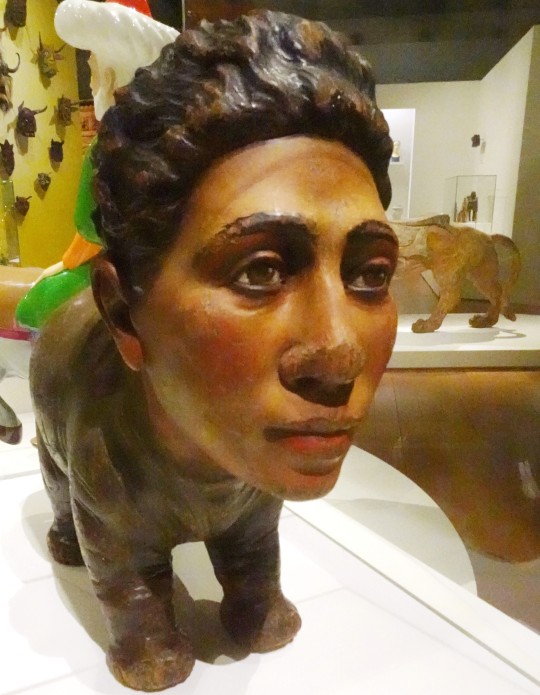

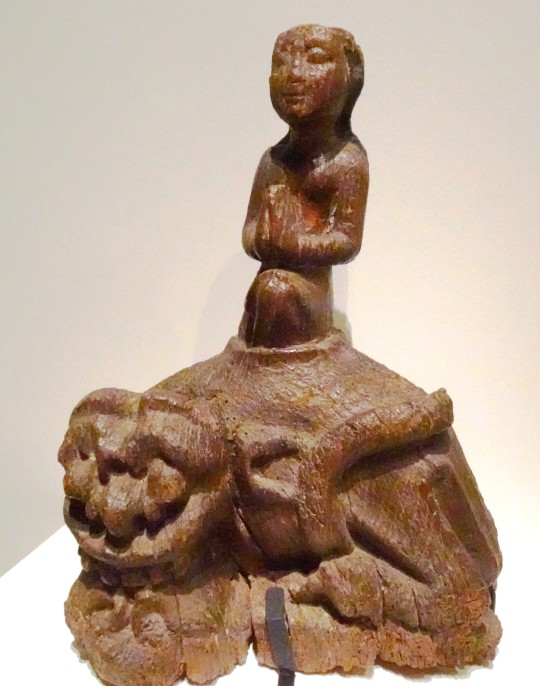


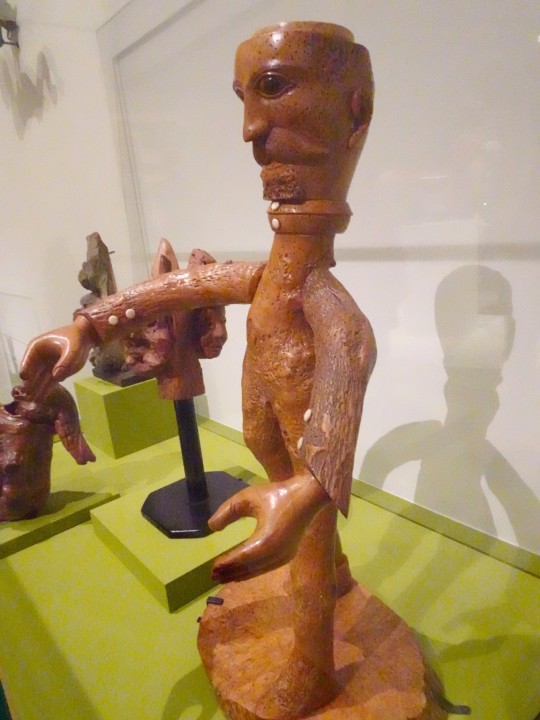
Marseille, le MuCEM et sa nouvelle collection permanente (à mes yeux, bien plus intéressante et mieux présentée que la précédente…)
Suite (et fin ?)
statue de sorcier ou de guérisseur...aux pieds fourchus !, sans doute utilisée pour des rituels de désenvoûtement - Nivernais, 1900-50
"L'Homme- Eléphant du cirque Landri" - France, fin XIXe s.
vase - Calabre, avant 1970
Sainte Marguerite sortant indemne du Dragon - Pornichet, "Bretagne", XVIIe s.
culot - Poitou-Charentes, XIIe s.
bascule, Molla Nasreddin the Antimodern - Pologne, 2012 ; automate femme-chat - Belgique, 1890; sujet de manège, Sirène - Neustadt en der Orla, Allemagne, 1900
voir 1
#marseille#MuCEM#monstre#diable#démon#sorcier#nivernais#nevers#homme-éléphant#monstre de foire#cirque#cirque landri#landri#pacha#pologne#manège#bascule#catwoman#belgique#chat#culot#dragon#poitou#sainte marguerite#pornichet#bretagne#art gothique#désenvoûtement#exorcisme#guérisseur
4 notes
·
View notes
Text
Wenn man eine Antimoderne mit modernen Mitteln erwirken will, dann ist man bei der Hamas, sagt Leon Kahane Foto: Piotr Pietrus
>> [...] Das Problem fängt dann an, wenn die Widersprüche der Welt, in die wir auch alle selbst verstrickt sind, simplizistisch gelöst und externalisiert werden. Das ist ein typischer Moment, wo der Antisemitismus sich bis zur Gewalt richtig entfesselt, denn Antisemitismus ist eine Kulturtechnik. Auf dem Banner von Taring Padi war dann der Jude der Urheber alles Bösen. Er steht noch hinter dem Teufel und manipuliert ihn.
Wie verbreitet ist dieses Weltbild in der Kunst?
Wir sehen einen enormen Zuwachs an essentialistischer, identitärer Kunst. Oft wird das Indigene zum Gegenstand von Projektionen. Das geht einher mit der Überhöhung einer Idee von Ursprünglichkeit und Authentizität. Sehr viel wird über die Kategorie des „Volks“ verhandelt. Anstelle des Individuums tritt das Kollektiv: Wir sind, was wir sind, und das ist ungebrochen und unhinterfragbar. Ich glaube, das ist das, was gerade Deutsche attraktiv finden am Postkolonialismus, weil sie sozusagen ein Verantwortungsverhältnis nach außen verschieben.
Gerade im Kulturbetrieb kam es aber auch zu einer vermehrten Aufarbeitung der Kolonialgeschichte, der Hinterfragung der Provenienz von Ausstellungsstücken.
Ja, richtig so! Aber warum leitet sich daraus die Idee, die Überzeugung ab, man müsse den Holocaust in die Gewalttradition des Kolonialismus stellen?
Was meint das?
Dass Deutschland mit der Aufarbeitung des Holocaust einen zu eingeschränkten, „provinziellen“ Blick habe. Nun: Deutschland muss in der Aufarbeitung seiner Kolonialverbrechen einiges nachholen. Aber es gibt darüber hinaus die Forderung, den Holocaust nicht mehr als präzedenzloses Menschheitsverbrechen zu sehen, sondern als einen Genozid von vielen. So wie Antisemitismus dann auch zu einer Spielart des Rassismus erklärt wird. Da steht Auschwitz dann neben empörend falscher Migrationspolitik und neben dem Krieg in Gaza. In dieser Logik wird Geschichte umgeschrieben. Wie sich das auf die Gegenwart und sie Zukunft auswirkt, können wir gerade live miterleben. <<
2 notes
·
View notes
Photo
“Inonder la zone” n’est pas seulement un slogan de conseiller en communication. Il s’agit d’art militaire, et même de philosophie de l’histoire. Rien d’étonnant de la part de Bannon, dont la vision du monde consiste à espérer une grande conflagration purificatrice. L’idéologue américain est en effet un lecteur assidu de René Guénon(1886-1951), qui exerce depuis longtemps une influence déterminante sur l’extrême droite. Selon cet intellectuel orientaliste et antimoderne, l’histoire est cyclique. L’erreur de la modernité occidentale est de la croire linéaire et en progrès constant. Il faut au contraire considérer “le désordre comme un élément de l’ordre” (Le Règne de la quantité et les signes des temps, 1945) et la violence des temps modernes comme la phase finale d’un cycle qui conduit à la régénération. Bannon appelle la guerre de ses vœux – contre l’islam, contre les immigrés, contre la Chine. Elle permettra une remise à zéro indispensable pour espérer un rebond de l’Occident, actuellement tombé en décadence. Comme l’écrit Guénon, “la fin d’un monde n’est jamais et ne peut jamais être autre que la fin d’une illusion”. (source : Philomag)
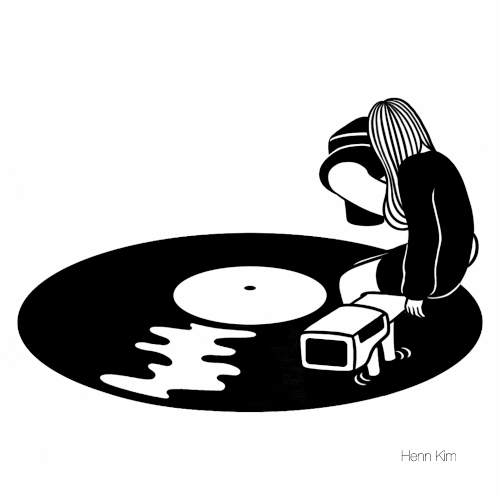
3K notes
·
View notes
